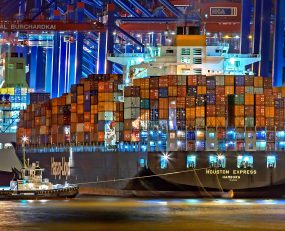
The risks involved from overexposed supply chains were apparent before COVID-19 struck. Just last year, the US-China trade war highlighted the dangers involved in sourcing goods from one location. This adds to well-known examples of natural disasters, labour issues, cyber-attacks and many more risks that can harm a company’s global supply chain.
Running a diversified supply chain is not without its difficulties though, and it is understandable that so many companies have failed to do so. It can be costly and having multiple suppliers can lead to increased complexity and reduced visibility if the correct systems are not in place. Further, having more than just a select few suppliers does not always guarantee that disruption will not occur. During this pandemic, multiple national shutdowns have led to facilities closing all around the world.
However, COVID-19 has laid bare just how important a strong and resilient supply chain is and debate is raging as to how best to achieve this. There is an argument that globalisation, that has slowed notably over the past decade will be reversed or slow further and that far more local manufacturing should take place in order to mitigate against future major risks. Whilst an element of this could be helpful in a few industries that could be core to critical sectors, such as in PPE manufacturing, this is not a strategy that can be carried out too widely. Bringing manufacturing back locally in developed economies is filled with problems. As well as developed economies having lost manufacturing expertise, it is expensive and would almost certainly require subsidy, potentially in the form of state-aid or tariffs. This would beg the question in a few years time as to why there is a need for domestic organisations to spend more to buy goods locally when they can buy them cheaper abroad. As well as harming productivity and ruining bottom lines in the private sector, the debate would be particularly acute in areas such as public health, where budgets are continuously under pressure.
Instead, we are likely to see global supply chains adjust with some trade agreements taking on renewed importance. The Comprehensive and Progressive Agreement for Trans-Pacific Partnership (CPTPP) is one such agreement that could prove highly useful in a post-coronavirus world. This agreement, involving 11 countries around the Pacific (Australia, Brunei, Canada, Chile, Japan, Malaysia, Mexico, New Zealand, Peru, Singapore, and Vietnam) was re-vamped after President Trump removed the United States from the agreement, formerly known as the TPP, almost as soon as he came to office. It became effective at the end of 2018.
This relatively new agreement is likely to take on a different purpose post-coronavirus. This will not just exist to help increase trade flows in total, but will help in the sphere of supply chain diversification too. The Japanese government recently created a $2bn fund for businesses to examine their supply chains with the intention of lessening their reliance on China in mind. China currently accounts for nearly a quarter of all Japanese imports and in areas such as automotive parts, it is even more crucial, accounting for nearly 40% of imports. The CPTPP may be a path to helping Japanese manufacturers (and others) find alternative sourcing locations.
Further possibilities for supply chain diversification could arise if the raft of other countries that have expressed an interested in joining the CPTPP in the wake of the COVID-19 pandemic enter the agreement. Notably South Korea, Thailand, Indonesia, the Philippines and the UK have all been linked with membership.
Interestingly too, the US and China appear open to entering into pacts with their Pacific partners, although not necessarily ones that include one another. US Secretary of State Mike Pompeo recently stated the US was looking at how to restructure supply chains with the help of nations such as Japan, Australia, New Zealand and Vietnam. There have also been suggestions that the US might seek to join the CPTPP. China on the other hand is aiming to sign the Regional Comprehensive Economic Partnership (RCEP) by the end of the year. This is an FTA that would cover 15 Pacific nations (all 10 of the ASEAN bloc plus Australia, China, Japan, New Zealand and South Korea) and would create the world’s largest global free trade agreement.
Developments in trade agreements in the Pacific are evidence of the importance that global and regional supply chains are likely to continue to have post-COVID-19. However, these trade agreements will be more important in increasing diversification than they ever used to be.
Source: Transport Intelligence, June 4, 2020
Author: Andy Ralls